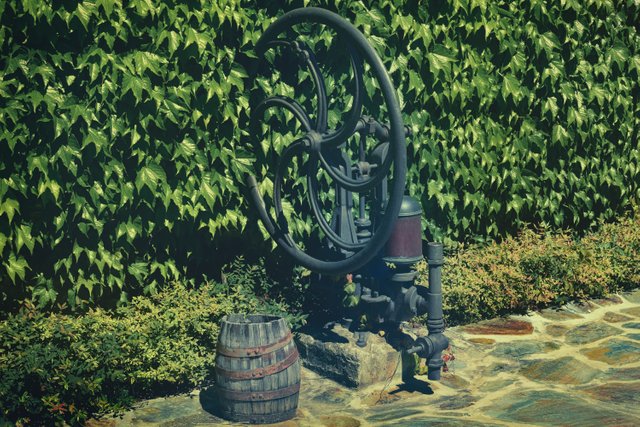📷Curiosities about the Azores Archipelago
Italy Community
✅ 1893 | A Devastating Tropical Depression that Affected the Azores
Although the Azores archipelago lies at latitudes around 40° North—outside the typical paths of tropical depressions that form between 10° and 30° North in the western Atlantic—there have been times when such storms veered off their usual routes and affected the Azorean region with varying intensity.
These depressions are classified based on wind speed and are named tropical depressions or tropical storms. When wind speed exceeds 119 km/h, they are categorized as hurricanes.
There are historical records of nine hurricanes that struck the Azores. One of the most devastating events occurred on August 28, 1893, impacting the Central Group of islands. This event was so significant that the year became locally known as “the year of the cyclone.”
The newspaper A Terceira referred to it as:
“The horrifying storm.”
Meanwhile, Districto d’Angra wrote:
“It was terrifying, the great storm that suddenly visited us yesterday from 9 AM to 2 PM.”
According to some reports, wind speeds reached between 160 and 170 km/h—a moderate-intensity hurricane, referred to at the time as a cyclone.
The Devastation
It was a tremendous storm that ravaged the countryside, destroyed crops, and caused the sea to invade the coastal areas of the Central Group islands. It tore down walls, roads, buildings, churches, and wine cellars.
“The sea, rising to a monstrous height,”
severely damaged ports and the vessels anchored there. Dozens of fishing boats, whaling canoes, and various ships were lost.
The Worst Tragedy
The greatest tragedy occurred at sea between Terceira and Graciosa. Despite signs of worsening weather, two yachts—Santa Cruz and S. Bernardo, from Santa Cruz das Ribeiras—set sail the previous night from Angra do Heroísmo to Graciosa.
The fierce rivalry between them, driven by commerce and prestige, led both crews to race for arrival. Both were caught in the storm and were never seen again—23 lives were lost.
The schooner Segredo dos Açores, the only ship docked in Angra and already loaded for Brazil, ran aground at 11 AM and was destroyed within 30 minutes. Fortunately, the crew had already evacuated.
In São Mateus:
“The wind destroyed 27 houses, the schooner Segredo dos Açores ran aground, and the city was flooded by the sea.
Two small yachts, Santa Cruz and S. Bernardo, departed from Terceira on the 27th heading to Graciosa and are presumed lost.
One was seen that fateful morning at 7 AM, out of control and calling for help, but it was impossible to assist.”
Impact on Other Islands
The cyclone also caused devastation in São Jorge, Pico, and Faial, particularly on the southern coasts and out at sea.
On São Jorge, especially at the eastern tip and in the village of Topo:
“The boats that used to sail from Topo to this and other islands disappeared.”
On Pico Island, dozens of fishing boats and whaling canoes were lost. Three vessels anchored in the Lajes do Pico bay—the S. João Baptista, Bom Jesus, and the Espírito Santo—were all wrecked. Despite the waves destroying ships, walls, and houses, most crews survived—except for one crewman aboard the Espírito Santo.
In Faial, the southern coast suffered greatly. In Horta harbor, many boats were lost, including at least three larger vessels such as the American schooner Tremont and the Italian steamer Guiseppe Emanuele.
“In Fayal, the damages were enormous. In the Varadouro bay, a barque from Italy and an American lugger loaded with timber were wrecked. The crew was rescued with great difficulty.”
Scientific Context
At the time, meteorology lacked the tools to predict such phenomena. As a result, the Annals of the Naval Military Club included two articles analyzing the cyclone, describing it and listing practical rules to minimize damage at sea.
“The most significant damage was caused by the cyclone's wave or surge, which, according to local newspaper accounts, reached unprecedented heights.”
Notably, the westernmost islands—Flores and Corvo—were not affected, an interesting fact noted in meteorological analyses.
Summary:
The cyclone of 1893 was one of the most severe natural disasters in Azorean history. It revealed the vulnerability of the islands to rare but intense tropical weather events and highlighted the importance of maritime safety and preparedness.
| Category | #italy |
| Photo taken at | Douro Valley - Portugal |
)


Upvoted! Thank you for supporting witness @jswit.
Hi, @marcoteixeira
Friend, how are you?
Is everything okay?
You can use my Telegram to communicate.
Username: joslud